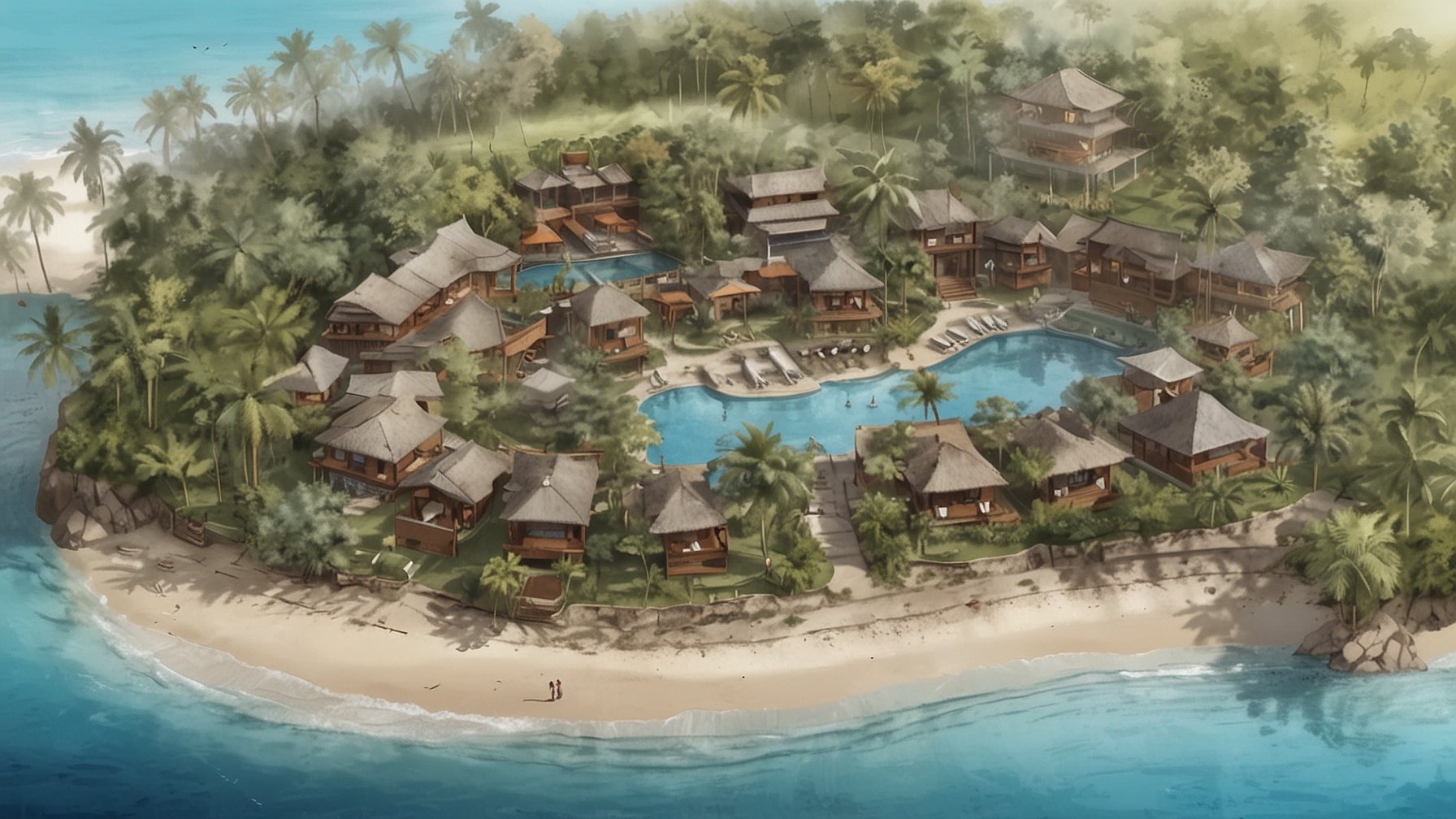5 Key Considerations for Planning a Luxurious Tropical Resort
Designing a tropical resort entails more than just creating a beautiful space; it's about crafting an immersive experience that harmonizes with the environment. To achieve this, landscape architects must consider five key features during site planning. In this article, we delve into these elements to provide an overview for creating luxurious tropical havens.
Strategic Location Selection
The success of a resort often hinges on its location. Beyond picturesque views, factors such as accessibility, climate and regulatory compliance play pivotal roles. Ideal locations offer a balance of natural beauty and convenience, with proximity to airports or cities without compromising ecological integrity. Conducting thorough site analyses ensures alignment with both guest expectations and environmental sustainability goals.
Sustainable Development and Environmental Stewardship
Tropical ecosystems are fragile, necessitating a proactive approach to sustainability. Site planning must prioritize environmental preservation through comprehensive assessments of local flora, fauna and ecosystems. Incorporating green building practices, renewable energy sources and water management strategies reduces the resort's ecological footprint while preserving natural resources. Embracing native vegetation not only enhances biodiversity but also fosters a sense of place, reinforcing the resort's connection to its surroundings.
Guest-Centric Design and Experiential Amenities
At the heart of every successful resort lies a thoughtful approach to guest experience. Site planning should focus on creating a seamless blend of luxury and comfort, with amenities strategically positioned to maximize convenience and enjoyment. From opulent accommodations to diverse dining options and recreational activities, every aspect should cater to guests' desires. Thoughtful design elements, such as infinity pools overlooking pristine vistas and secluded relaxation areas, elevate the overall experience, fostering lasting memories for visitors.
Cultural Integration and Authenticity
Tropical resorts are not just destinations; they are gateways to diverse cultures and traditions. Effective site planning involves embracing the local heritage, incorporating indigenous materials, architectural styles and design motifs. Engaging with the surrounding community fosters mutual respect and creates opportunities for cultural exchange. By showcasing local craftsmanship and supporting nearby businesses, resorts become integral parts of the cultural tapestry, offering guests immersive experiences beyond the confines of the property.
Resilience and Disaster Preparedness
Tropical regions are prone to natural hazards, making resilience a critical aspect of site planning. Implementing robust building codes, construction standards and disaster preparedness protocols is essential for ensuring guest safety and operational continuity. Site elevation, drainage systems and structural reinforcements mitigate risks associated with floods, hurricanes, and seismic events. Collaborating with local authorities and stakeholders to develop emergency response plans enhances overall preparedness, safeguarding both guests and the surrounding environment.
Conclusion
In the realm of tropical resort design, site planning serves as the foundation for creating unparalleled experiences that resonate with guests while preserving the natural splendor of the surroundings. By embracing strategic location selection, sustainable development practices, guest-centric design principles, cultural integration and resilience strategies, landscape architects can elevate luxury to new heights, crafting resorts that captivate the senses and leave lasting impressions on all who visit.

